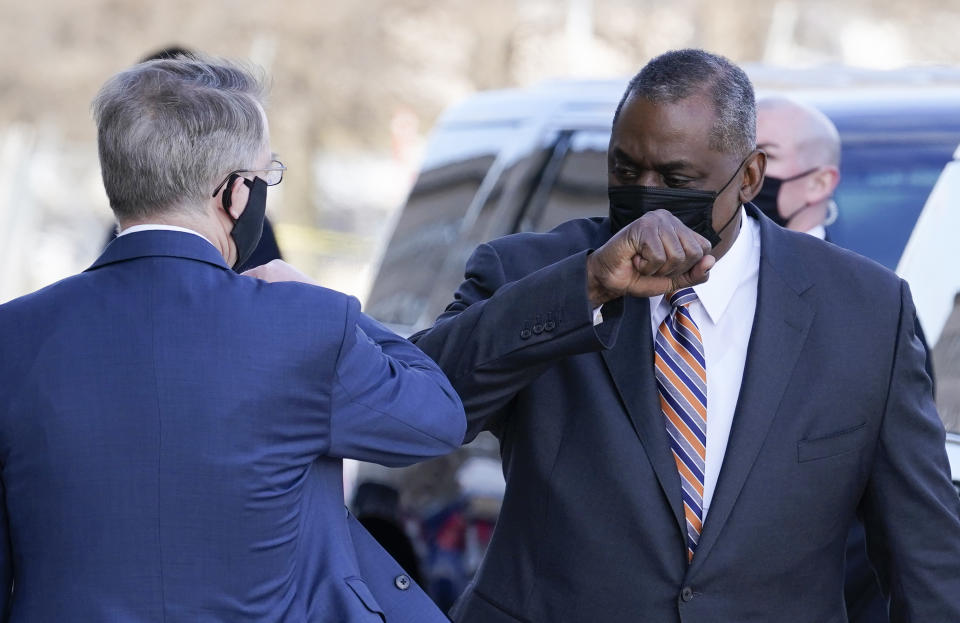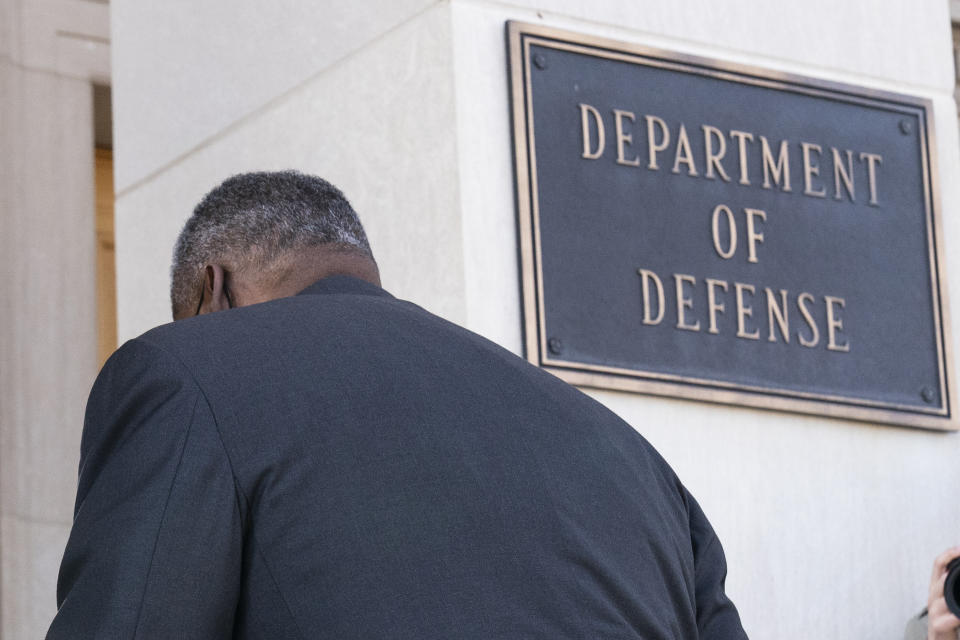For 1st Black Pentagon chief, racism challenge is personal
WASHINGTON (AP) —
Newly confirmed Defense Secretary Lloyd Austin will have to contend not only with a world of security threats and a massive military bureaucracy, but also with a challenge that hits closer to home: rooting out racism and extremism in the ranks.
Austin took office Friday as the first Black defense chief, in the wake of the deadly insurrection at the U.S. Capitol, where retired and current military members were among the rioters touting far-right conspiracies.
The retired four-star Army general told senators this week that the Pentagon’s job is to “keep America safe from our enemies. But we can’t do that if some of those enemies lie within our own ranks.”
Ridding the military of racists isn’t his only priority. Austin, who was confirmed in a 93-2 vote, has made clear that accelerating delivery of coronavirus vaccines will get his early attention.
But the racism issue is personal. At Tuesday’s confirmation hearing, he explained why.
In 1995, when then-Lt. Col. Austin was serving with the 82nd Airborne Division at Fort Bragg, North Carolina, three white soldiers, described as self-styled skinheads, were arrested in the murder of a Black couple who was walking down the street. Investigators concluded the two were targeted because of their race.
The killing triggered an internal investigation, and all told, 22 soldiers were linked to skinhead and other similar groups or found to hold extremist views. They included 17 who were considered white supremacists or separatists.
“We woke up one day and discovered that we had extremist elements in our ranks,” Austin told the Senate Armed Services Committee. “And they did bad things that we certainly held them accountable for. But we discovered that the signs for that activity were there all along. We just didn’t know what to look for or what to pay attention to.”
Austin is not the first secretary to grapple with the problem. Racism has long been an undercurrent in the military. While leaders insist only a small minority hold extremist views, there have been persistent incidents of racial hatred and, more subtly, a history of implicit bias in what is a predominantly white institution.
A recent Air Force inspector general report found that Black service members in the Air Force are far more likely to be investigated, arrested, face disciplinary actions and be discharged for misconduct.
Based on 2018 data, roughly two-thirds of the military’s enlisted corps is white and about 17% is Black, but the minority percentage declines as rank increases. The U.S. population overall is about three-quarters white and 13% Black, according to Census Bureau statistics.
Over the past year, Pentagon leaders have struggled to make changes, hampered by opposition from then-President Donald Trump. It took months for the department to effectively ban the Confederate flag last year, and Pentagon officials left to Congress the matter of renaming military bases that honor Confederate leaders. Trump rejected renaming the bases and defended flying the flag.
Senators peppered Austin with questions about extremism in the ranks and his plans to deal with it. The hearing was held two weeks after lawmakers fled the deadly insurrection at the Capitol, in which many of the rioters espoused separatist or extremist views.
“It’s clear that we are at a crisis point,” said Sen. Tammy Duckworth, D-Ill., saying leaders must root out extremism and reaffirm core military values.
Sen. Tim Kaine, D-Va., pressed Austin on the actions he will take. “Disunity is probably the most destructive force in terms of our ability to defend ourselves," Kaine said. "If we’re divided against one another, how can we defend the nation?”
Austin, who broke racial barriers throughout his four decades in the Army, said military leaders must set the right example to discourage and eliminate extremist behavior. They must get to know their troops, and look for signs of extremism or other problems, he said.
But Austin — the first Black man to serve as head of U.S. Central Command and the first to be the Army's vice chief of staff — also knows that much of the solution must come from within the military services and lower-ranking commanders. They must ensure their troops are trained and aware of the prohibitions.
“Most of us were embarrassed that we didn’t know what to look for and we didn’t really understand that by being engaged more with your people on these types of issues can pay big dividends,” he said, recalling the 82nd Airborne problems. “I don’t think that you can ever take your hand off the steering wheel here.”
But he also cautioned that there won't be an easy solution, adding, “I don’t think that this is a thing that you can put a Band-Aid on and fix and leave alone. I think that training needs to go on, routinely."
Austin gained confirmation after clearing a legal hurdle prohibiting anyone from serving as defense chief until they have been out of the military for seven years. Austin retired less than five years ago, but the House and Senate quickly approved the needed waiver, and President Joe Biden signed it Friday.
Soon afterward, Austin strode into the Pentagon, his afternoon already filled with calls and briefings, including a meeting with Army Gen. Mark Milley, chairman of the Joint Chiefs of Staff. He held a broader video conference on COVID-19 with all top defense and military leaders, and his first call to an international leader was with NATO Secretary General Jens Stoltenberg.
Austin, 67, is a 1975 graduate of the U.S. Military Academy at West Point. He helped lead the invasion into Iraq in 2003, and eight years later was the top U.S. commander there, overseeing the full American troop withdrawal. After serving as vice chief of the Army, Austin headed Central Command, where he oversaw the reinsertion of U.S. troops to Iraq to beat back Islamic State militants.
He describes himself as the son of a postal worker and a homemaker from Thomasville, Georgia, who will speak his mind to Congress and to Biden.





